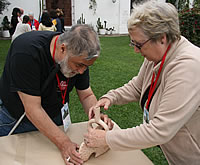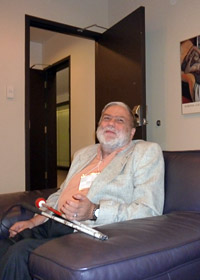Act Now

Empower U: Learn to Access Your Disability Rights Training on Canadian Human Rights, the Convention on the Rights of Persons with Disabilities (CRPD) and its Optional Protocol (OP) training aims to increase awareness of how to address discrimination using more familiar Canadian human rights laws such as Human Rights Codes and the newer international Convention on the Rights of Persons with Disabilities (CRPD). This is training for persons with disabilities by persons with disabilities. The training is part of a project funded by Employment and Social Development Canada and implemented by the Council of Canadians with Disabilities (CCD) in collaboration with Canadian Multicultural Disability Centre Inc. (CMDCI), Citizens With Disabilities – Ontario (CWDO), Manitoba League of Persons with Disabilities (MLPD) and National Educational Association of Disabled Students (NEADS). Read more.
Sign Up for our monthly digest
A monthly newsletter from CCD about what is happening in the community
John Rae Speaks Out On Access to Culture, Museums and Art Galleries
The conference entitled "Connection, Collections, Communities—Making Museums and Galleries in Canada Inclusive and Accessible", which was held at the National Art Gallery in Ottawa from October 1st until October 4th, 2009 was the first national conference of its kind in Canada and it appears to me a number of other countries are far ahead of Canada when it comes to museum and art gallery access. It was timely and, hopefully, it will stimulate leaders in that field in Canada to make their facilities, collections and programs accessible to persons with various disabilities.
Some may ask why is museum access important when there are so many other important issues to be addressed. People with disabilities have the right to access all facets of life. Museums and art galleries are a window on the past. They also provide educational programs that are aimed at students and all members of the community. We ought to be able to take part in all those programs, just like our fellow citizens.

John Rae examines a replica at the Larco Museum in Lima, Peru
I am a history lover so museums are repositories of the past from various civilizations around the world. For a blind person like me, the key is being able to touch some of those items in a collection. It is useful to have people who are good at describing artifacts and some people are excellent at doing that. It is another thing to have raised line drawings of an item or a painting. It is another thing to have replicas. These are all beneficial but there is no substitute for being able to run my fingers over the real thing to get a sense of what it was made of, what the sculpture is really like.
I think vision gives you one way of appreciating an object—a way that I can't do. But even if I could, the more of your senses that you use, you are going to get different reactions and different ways of appreciating the same item. I think it useful to be able to use all of your senses even if you can see. And so, that is why tactile access is so important to me.
An argument against tactile access is, of course, that the oils from your fingers can damage these irreplaceable artifacts. As a history lover, I am as concerned about conservation as are conservators, but, by using light gloves I think that can be prevented.
There are various museums that are providing improved access for people with disabilities. The Ny Carlsberg Glyptotek museum in Copenhagen is my favorite. It is a private museum with a collection of statuary from ancient times—all the way back to 5 or 6,000 BCE. I was able to touch pretty much all of it. Some museums have given me special tours. On the flag ship of Admiral Nelson in England, they took away the barriers so I could walk around the quarter deck and that was great. In Peru, where I just was recently, the Larco Museum in Lima,which is a private museum of pre-Incan items, set up tables for us and we got to touch about 20 items—cast replicas from their museum, and then they gave us a piece to take home, which was really lovely.

John Rae takes a break at the Connections, Collections, Communities conference
There are all kinds of things that museums, art galleries and heritage properties can do to make their facilities, programs and lectures accessible to more of us. This can include: building a ramp, or providing larger print on display cases, or having public programs where lecturers describe more of what is on the slide than what they normally do, or providing information in plain language so more people can benefit from what is being described. Like with other things, it is a question of will. It costs a little bit, probably not a great deal.
Of course, at the end of the day if these facilities are going to make these efforts and do a better job of providing access, part of it involves communicating those changes to our community so that we will be encouraged to go and participate. After all, at present so many of us assume that an art gallery or a museum is not going to be terribly accessible so why should we bother going. There are properties that are doing things and this needs to be communicated to our community.
